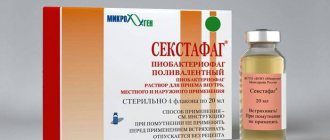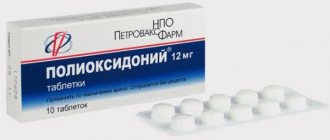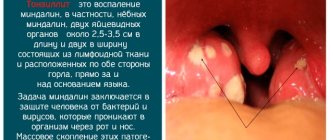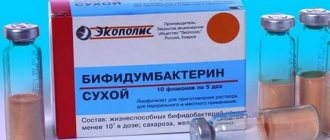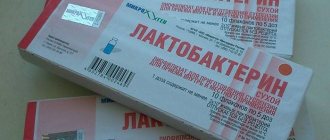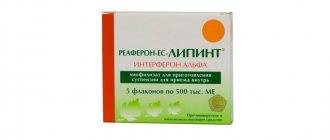Description
This drug appeared in the middle of the last century. Previously, it could only be found in the first aid kit of spaceships. Later it appeared everywhere and was widely used by Russians.
The drug is available in the form of an ointment, spray, solution. It acts on many harmful bacteria, but the remedy is powerless against viruses. Miramistin is used for prevention and treatment in urology, gynecology, and ENT practice.
The drug treats diseases such as:
- angina;
- stomatitis;
- urethritis;
- laryngitis;
- otitis;
- sinusitis;
- vaginosis.
You can also use it to prevent sexually transmitted infections after unprotected sexual intercourse. After operations, it is recommended to treat sutures with Miramistin.
Different forms of release are used for different diseases. For example, a small bottle with a dropper is sold for sinusitis. For gynecological and urological purposes, a large bottle with a long nozzle is produced.
Indications
Miramistin is actively used in many medical areas for disinfection and in complex treatment as a prophylaxis:
- in otorhinolaryngology, the drug treats inflammation of the nasopharynx in any form;
- in dentistry they treat infectious and inflammatory diseases such as stomatitis, periodontitis, peridontitis, gingivitis and irrigate the oral cavity to prevent the occurrence and development of these ailments. The medicine is also used to disinfect removable dentures;
- in surgery and traumatology, it helps during the treatment of purulent-inflammatory processes and complications on open wounds. The drug can also be used to prevent the formation of suppuration when various types of integument are damaged.
- in combustiology, the drug is used to treat burns of varying severity. In addition, the product is used to treat wounds during preparatory procedures before dermatoplasty;
- in dermatology and venereology, Miramistin is used to treat pyoderma, candidiasis, and mycoses. As an individual prophylaxis, the drug is actively used to prevent the occurrence of sexually transmitted diseases;
- in urology, it is prescribed along with other medications for the complex treatment of urethiritis and urethroprostatitis in acute and chronic forms of specific and nonspecific nature.
Methods of application
The medicine is used not only during inpatient therapy; it can also be used at home without any problems.
When treating purulent sinusitis with Miramistin, the maxillary sinus is washed generously for puncture. If you have a sore throat (tonsillitis, laryngitis, pharyngitis), you need to irrigate it every 6 hours (maximum 4 pumps), or gargle (no more than 15 ml.) the throat. When treating such diseases in children, the throat only needs to be irrigated. Like adults, children undergo the procedure every 6 hours.
For problems with teeth and gums (stomatitis, periodontitis, gingivitis), use Miramistin to rinse the mouth with 15 ml of the product up to 4 times a day. If the medicine is prescribed for the treatment of wounds or burns, it is necessary to apply a gauze swab soaked in Miramistin for 3-5 days. This procedure is carried out up to 3 times a day. The drug is used in the same way to prevent the formation of suppuration. In clinical settings, wounds and cavities are drained with this medicine - up to 1 liter daily.
As a prophylactic against sexually transmitted viral diseases, treatment with Miramistin should be carried out immediately. After two hours, the procedure will not bring the desired effect. To administer the medication, men will need a special urological applicator. 3 ml must be inserted into the urethra and kept there for about three minutes. The drug is also administered to women, but a maximum of two milliliters is sufficient. In addition, it is necessary to additionally introduce about 10 milliliters of Miramistin into the vagina itself. In addition to internal administration, the drug must be generously applied to the genital organs themselves, as well as the pubis and inner thighs. You should refrain from urinating for at least two hours after treatment.
During the treatment of urethroprostatitis and urethritis in both acute and chronic forms, Miramistin is injected directly into the urethra in an amount of up to 2 ml 2 times a day. The duration of the treatment course is approximately 10 days.
Is it possible to gargle with Miramistin?
For throat diseases, it is necessary to treat it with Miramistin. You can simply spray it on your throat, or you can gargle it. For an adult, there is no need to dilute the drug with water. And for children you can dilute it half and half with water.
You should rinse after eating, having previously cleaned your mouth. Ten milliliters of product is enough for one procedure. You need to rinse for five minutes, pronouncing the sound “s”.
It is important to ensure that the child does not swallow the product. If an adult or child accidentally swallows Miramistin, then there may be nausea or an allergic reaction. If the remedy has already been used before and there was no allergy, then swallowing the remedy can only cause nausea.
The procedure must be repeated at least five times a day. You can alternate rinsing with Miromistin with conventional products (sage, chamomile, oak bark). If the sore throat is purulent, you can wipe your throat with a cotton swab soaked in Miramistin.
The benefit of this product is that it not only deactivates harmful microorganisms, but also improves immunity. Miramistin is also good because it is practically not absorbed into the blood.
Which remedy is more effective: Miramistin or Chlorhexidine?
These medications are analogues of each other, only Chlorhexidine is a cheap antiseptic. Its solution is used to irrigate purulent open wound surfaces, as well as inflamed areas of the epidermis and for the treatment of medical instruments. The cost of this medicine is much lower. "Chlorhexidine" does not penetrate into the mucous cavities and deep into the skin. If you use the solution topically, you can feel a slight tingling sensation after applying the medication to the dermis.
In most cases, Chlorhexidine is used in dentistry. It anesthetizes well, treats, eliminates swelling and inflammation in the gums. But the drug can have a detrimental effect on tooth enamel and can cause it to darken and cause plaque to appear. Chlorhexidine should be used in dental practice carefully and only on the recommendation of a doctor. As a rule, you can rinse your mouth with the solution when the gums are swollen and after surgery.
Important! “Chlorhexidine” is an excellent solution for rinsing a sore larynx with chronic tonsillitis, an inflammatory process of the tonsils. It cleans the throat of dirt and pus, eliminates harmful microorganisms at the very source of the infection, eliminates the infection and prevents its further reproduction. The antiseptic properties of the drug contribute to the rapid removal of various throat diseases. The medication can be used to treat children from two years of age.
The solution is not used for venereal diseases. The active trace element has no effect on fungal infections and herpes. "Chlorhexidine" does not bring any pharmacological effect.
This drug can cause adverse reactions - itching and dryness of the dermis. "Chlorhexidine" is not recommended for use when a woman is in an "interesting position" or is breastfeeding. If negative effects occur, you should stop using the solution.
If you choose between Chlorhexidine and Miramistin, the difference between the two drugs is noticeable. The second medication is more effective in treating various diseases, causes a minimum of negative reactions and does not stain tooth enamel when treating the mouth. But in most cases, the beneficial effects of Chlorhexidine are considered justified due to its low price.
According to reviews, “Chlorhexidine” is used mainly for irrigation of the affected area of the epidermis. Occasionally it is used as a disinfection of mucous cavities. Generally, people are satisfied with the results of the antiseptic.
Important! "Chlorhexidine" can provoke various adverse reactions, unlike "Miramistin". Therefore, it is better for children and women in an “interesting situation” to be treated with safer drugs. Miramistin does not cause side effects in men and women.
Composition of the drug
The drug contains a complex chemical substance that has a long name. Miramistin is an aqueous solution of the substance 0.01 percent. It is completely transparent, but sometimes there is sediment.
The solution is available in the form:
- drops in the nose and ears;
- throat spray;
- gargling solution;
- bottles with attachments for douching in gynecology;
- bottles with sprayers for use in urology, surgery, dentistry;
- sterile eye drops.
Miramistin is also produced in the form of 0.5 percent ointments used in dermatology. The uniqueness of the active substance is that it recognizes diseased cells without affecting healthy ones.
How to store Miramistin after opening
Miramistin has firmly entered into therapeutic and preventive practice. It is available, safe and effective.
But when the effect of use does not occur, inflammation gains momentum, and the infection spreads, then first of all they think about counterfeiting.
But is it? After all, a lot depends on proper storage and use. What do you need to know about the storage conditions of Miramistin and how long can one package be used?
Like any medicine, Miramistin has a certain period during which the drug can be used - 3 years. The dates when the drug was released and until which the drug can be used are indicated at the bottom of the paper label of the bottle and on the cardboard box, indicating the month and year.
The period of permissible use both at room temperature and when stored in the refrigerator is the same - 3 years. Storage temperature should be no higher than 25 o C.
Is it possible to use the drug if the period expires in 5-10 days? Yes, completely. If there are several days left until the end of the specified month, then you can use it, but after the specified month you need to take a new package.
Important! Miramistin factory bottles have a first opening ring. Detaching this ring from the lid confirms that the package has been opened. The shelf life of an opened bottle of Miramistin is much shorter - 1 month under the same temperature conditions.
During the period of permissible storage, no significant changes occur in the solution.
After the expiration date, the solution may change its external characteristics (color, smell, taste, presence of sediment), lose antimicrobial activity, and become toxic and allergenic.
After an acceptable period of time, irreversible oxidative reactions begin to occur in the solution, destroying the structure of the drug and changing its properties.
How to understand that a defective drug is not suitable for use, how to identify an expired drug? The first thing that will help assess the suitability of a medicine is visual inspection. Normally, the solution is transparent, with a slight specific odor and bitter taste, without precipitation.
Any deviations - a change in color, the appearance of a pungent odor, the formation of sediment or flakes - indicate the unsuitability of the solution. The packaging must be intact. A bottle with melted areas or cracks and other mechanical damage also indicates the unsuitability of Miramistin.
Analysis of the permissible shelf life relative to real time will show whether the solution is suitable for use. The opened package must indicate the exact date the bottle was opened, this will make it possible to determine whether a month has passed since opening.
After the expiration date, the solution cannot be used.
Using an expired drug can cause harm to human health. Using an unsuitable Miramistin solution can lead to allergic reactions. They manifest themselves in the form of skin rash, Quincke's edema and anaphylactic shock. Possible development of toxic and food poisoning. When using an expired solution locally, toxic dermatitis may develop.
The drug can be freely stored at home. A shelf in a closet, a refrigerator, or a special container with a lid is suitable for this. The home first aid kit should be located out of the reach of children.
The medicine should be stored in a dry place, out of direct sunlight.
In the refrigerator, the drug can be placed on the door in a closed shelf so that there is no direct contact with food.
The opened bottle can be stored with the cap screwed on at room temperature under normal conditions, or in the refrigerator. This will not affect the shelf life.
What conditions is Miramistin “afraid of”?
- The temperature is above +25 o C and below +4 o C.
- Exposure to direct sunlight.
- Near heating appliances or refrigerators.
Is it possible to store lenses in Miramistin? No. Miramistin does not have the required pH level, so it can destroy the surface of the lens. An analogue of Miramistin, Okomistin, has been developed for use in the eye area. And for storing lenses you need to choose a more suitable solution.
How to store complex drops with miramistin? Such prepared drops should be stored in the refrigerator. In an insulated container, according to the recipe instructions. Usually, shelves on the door are suitable for this purpose.
Is it possible to store Miramistin at sub-zero temperatures? No. Freezing the solution leads to the destruction of its structure and neutralization of antibacterial activity.
Storage of the drug in pharmacies, clinics and hospitals has a number of requirements and is controlled by inspection authorities. Miramistin should be stored in a cabinet specially designated for storing medicines.
In clinics and hospitals, a special room is allocated for storage, equipped according to the requirements. In a pharmacy, this is a common area. It is acceptable to store Miramistin next to other medications.
How should the room for medicines be equipped:
- medicine storage cabinet,
- household refrigerator for storing medicines,
- hygrometer,
- hood,
- thermometer,
- logbook.
Basic regulatory orders for the storage of drugs:
- Order of the Ministry of Health and Social Development of the Russian Federation dated August 23, 2010. No. 706-“On approval of rules for storing medicines”
Source: https://niz-info-spravki.ru/miramistin-kak-hranit-posle-vskrytija/
What does it work on?
Miramistin acts on many harmful bacteria:
- streptococci;
- staphylococci;
- E. coli;
- Klebsiella;
- pseudomonas;
- aspergillus;
- penicillin and yeast fungi.
In addition, it acts on chlamydia, Treponema pallidum, and gonorrhea pathogens.
There are so-called hospital infections that can be picked up in a hospital setting. Such infections are often resistant to multiple antibiotics. There have always been difficulties in treating them. But Miramistin is precisely capable of influencing such pathogens.
Miramistin treats burns of various origins, including sunburn. It also protects burn surfaces from bacteria. It may also reduce bacterial resistance to antibiotics.
Miramistin 500 ml
An economical bottle, suitable for manipulations that require a large amount of the drug, as well as for use in hospitals and dressings.
Miramistin® has a wide spectrum of antimicrobial action, including hospital strains resistant to antibiotics. Increases the sensitivity of bacteria, fungi and protozoa to the action of antibiotics. Stimulates local protective reactions at the site of inflammation. The drug is not absorbed and does not have a local irritant or allergenic effect. ‹ Modern antiseptics: rebirth Up Miramistin - instructions for use ›
Application in ENT practice
Miramistin is widely used for diseases of the ear, nose and throat. It treats inflammation of the inner and outer ear. It is also used in the form of drops for sinusitis and sinusitis. They help with allergic swelling of the mucous membrane.
This is important, because some nasal drops, for example Nazivin, cause swelling of the nasal mucosa. Miramistin is also administered as a puncture, sometimes for inflammation of the nasal sinuses.
Miramistin is also used for pharyngitis, laryngitis, sore throat, and tonsillitis. This remedy does not cause irritation to the mucous membranes as, for example, from Chlorhexidine. All ENT diseases must be treated comprehensively, alternating with other medications, for example, throat lozenges such as Strepsils. Miramistin in the form of lozenges is not yet available.
Which is better: Miramistin or Hydrogen Peroxide?
Hydrogen peroxide is a non-toxic antiseptic solution. When irrigating tissues, the medicine prevents infection from entering the wound and prevents harmful microorganisms from entering the blood.
This inexpensive analogue of Miramistin can replace an expensive medicine. “Hydrogen peroxide” is used to gargle, irrigate wounds, scratches, and ulcers. Medical instruments can be treated with the solution. The antiseptic does not damage the layers of the epidermis and does not cause redness or burning. The medicine has been used in all hospitals for a long time.
When choosing “Hydrogen Peroxide” or “Miramistin”, you must take into account the purpose of use. When eliminating a sore throat, you can use “Hydrogen Peroxide” (to treat a sore throat).
A powerful antiseptic agent has a low price and is available to anyone. “Hydrogen peroxide” may well replace the expensive “Miramistin” in the treatment of a wide variety of diseases and injuries. The generic eliminates harmful microflora and disinfects the affected area, has an anti-inflammatory effect and disinfects well.
Subtleties of use in gynecology
- If women are prescribed to use Miramistin in gynecology, when treating the external genitalia with the drug, it is not recommended to urinate for two hours;
- It is allowed to use the drug during pregnancy and lactation;
- It is not recommended to use it in gynecology with antibacterial agents, as the resistance of microorganisms to antibiotics is reduced.
There were no cases of overdose in gynecology.
The drug "Miramistin": instructions for use and dosage
A pharmacological agent for getting rid of external integumentary defects is used in the form of healing lotions - a sterile napkin is moistened with the solution, or an occlusive dressing is applied.
After undergoing surgery for osteomyelitis, the wound surface is abundantly irrigated with medication - through a special drainage, and then everything is tamponed.
In urology, it is practiced to inject a medicinal solution into the human urethra - in a volume of 2.5–5 ml three times a day. If there is a need for emergency prevention of pathologies of sexually transmitted etiology, thorough, copious washing of the genital organs is recommended; a tampon, previously soaked in medication, is inserted into the vagina. Women can also undergo the douching procedure - after sexual intercourse without barrier contraceptives, 5.5–10 ml of solution, and for men, 1 ml of solution in the urethra. However, high efficiency will be observed only in the first 1.5–2 hours after sexual intercourse.
In order to eliminate inflammatory foci in gynecological practice, intravaginal administration of tampons pre-treated with Miramistin is used. The therapeutic tactics for relieving the manifestations of otitis involve the introduction of 2 ml of medication into the ear canal. For diagnosed tonsillitis and laryngitis, it is permissible to rinse the oropharynx up to 5–6 times a day. In case of purulent sinusitis, otolaryngologists wash the sinus with the product after removing the pathological exudate.
When burn or wound surfaces are identified, Miramistin ointment is used - turundas with the product are placed on the defect, after its pre-treatment, a bandage is placed on top.
By
How it is used in gynecology
The key to a quick recovery is the correct use of the drug. It is prescribed exclusively by the attending physician. In gynecology, Miramistin solution is most often used. The ointment is almost never used.
In gynecology, postpartum sutures are treated with a solution or spray to prevent infection. Miramistin is indispensable for festering wounds. It helps to quickly relieve inflammation and destroy infection. Effective in combination with Pantestin.
Ways to use Miramistin for women in gynecology:
- Cotton, gauze swabs with Miramistin . This method is used if vaginitis, colpitis, and endometritis are diagnosed. The tampon is generously moistened with Miramistin and inserted into the vagina. The duration of therapy is determined individually, depending on the pathology. But usually it is one week.
- Douching . Douching procedures are prescribed in gynecology for the prevention and treatment of sexually transmitted pathologies and fungal infections. It is recommended to douche or wash yourself, taking baths with Miramistin after each sexual intercourse. After the procedure, it is not recommended to shower or urinate for 2 hours. The baths are prepared in the ratio of 1 part solution, 5 parts water.
- Electrophoresis in gynecology . This procedure involves the administration of Miramistin using electric current. A procedure is prescribed for the treatment of diseases of the pelvic organs.
- Introduction into the urethra . It is used during the treatment of urethritis and venous diseases.
- The spray can be used to treat the vagina, and during a cesarean section (to treat the incision and uterine area).
- Miramistin suppositories in gynecology effects for the treatment of thrush. Duration of treatment is up to 14 days. The suppository should be inserted into the vagina at night (douche with Miramistin or Chlorphyllipt first). Be sure to use pads after inserting the suppository, as there may be vaginal discharge at night. In the morning, douching is done again.
- Introduction to the uterus of Miramistin . This procedure in gynecology is performed when women have postpartum endometritis. This pathology is infectious in nature. This damages the endometrium on the inner surface of the uterus. Washing the uterus with Miramistin is performed 5-6 days after birth. After the procedure, the uterine cavity is cleansed, inflammation is reduced, infection is destroyed, and the surfaces of wounds that are formed as a result of the expulsion of the placenta are healed.
It is not recommended to use the ointment or solution yourself. Miramistin is not absorbed into tissues, but the active substance accumulates on the treated area. With increasing dosage, allergic reactions may develop.
Operating principle
The action of Miramistin is based on direct interaction with the membrane of microorganisms, as a result of which the supra-membrane layer is destroyed, the membrane is loosened, and its permeability to high-molecular compounds increases. A redistribution of enzyme activity occurs, which leads to inhibition of vital activity and destruction of the microbial cell.
Unlike other antiseptics, it is highly selective and does not damage human cells, due to differences in the structure of the wall.
It is active against gram-positive (staphylococci, streptococci, anthrax bacillus) and gram-negative (Escherichia coli, salmonella, shigella, vibrio, gonococcus) flora, spirochetes, chlamydia, diphtheria pathogens, viruses (herpes simplex, influenza), and some fungi (candida and trichophyton).
In addition, the drug has the properties of a hypertonic solution, that is, it “pulls out” pus, toxins and waste products of microorganisms from wounds and burns.
What is the main composition, the available form of release
The manufacturer indicates the active substance of the same name in the composition of the drug “Miramistin”. The auxiliary component is distilled water. Other ingredients are not specified in the instructions.
In the pharmacy chain, the pharmacological agent is presented in the form of a solution intended for local use. The clear, colorless solution may foam if shaken. The medication is packaged in special polyethylene bottles with a volume of 50 ml or 100 ml, as well as 150 ml or 200 ml. There are 1 piece in a consumer cardboard bud.
The standard kit also includes a spray nozzle or a special pump for spraying the medication. In stationary conditions, 500 ml bottles can be used. The manufacturer does not produce the medicine in suppositories or tablets.


